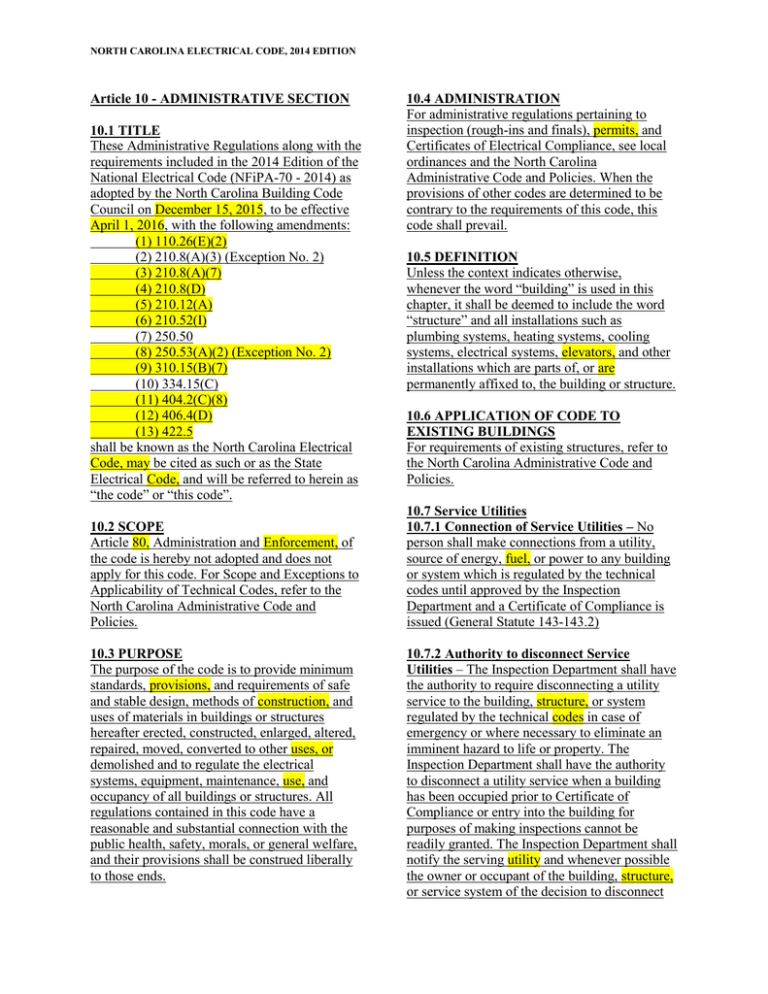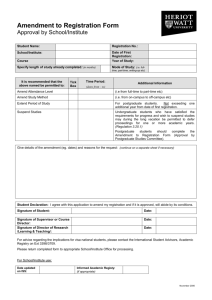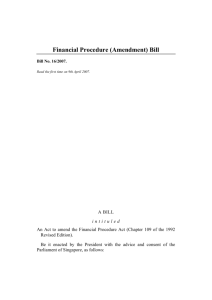Article 10 - ADMINISTRATIVE SECTION 10.4 ADMINISTRATION 10.1 TITLE
advertisement

NORTH CAROLINA ELECTRICAL CODE, 2014 EDITION Article 10 - ADMINISTRATIVE SECTION 10.1 TITLE These Administrative Regulations along with the requirements included in the 2014 Edition of the National Electrical Code (NFiPA-70 - 2014) as adopted by the North Carolina Building Code Council on December 15, 2015, to be effective April 1, 2016, with the following amendments: (1) 110.26(E)(2) (2) 210.8(A)(3) (Exception No. 2) (3) 210.8(A)(7) (4) 210.8(D) (5) 210.12(A) (6) 210.52(I) (7) 250.50 (8) 250.53(A)(2) (Exception No. 2) (9) 310.15(B)(7) (10) 334.15(C) (11) 404.2(C)(8) (12) 406.4(D) (13) 422.5 shall be known as the North Carolina Electrical Code, may be cited as such or as the State Electrical Code, and will be referred to herein as “the code” or “this code”. 10.2 SCOPE Article 80, Administration and Enforcement, of the code is hereby not adopted and does not apply for this code. For Scope and Exceptions to Applicability of Technical Codes, refer to the North Carolina Administrative Code and Policies. 10.3 PURPOSE The purpose of the code is to provide minimum standards, provisions, and requirements of safe and stable design, methods of construction, and uses of materials in buildings or structures hereafter erected, constructed, enlarged, altered, repaired, moved, converted to other uses, or demolished and to regulate the electrical systems, equipment, maintenance, use, and occupancy of all buildings or structures. All regulations contained in this code have a reasonable and substantial connection with the public health, safety, morals, or general welfare, and their provisions shall be construed liberally to those ends. 10.4 ADMINISTRATION For administrative regulations pertaining to inspection (rough-ins and finals), permits, and Certificates of Electrical Compliance, see local ordinances and the North Carolina Administrative Code and Policies. When the provisions of other codes are determined to be contrary to the requirements of this code, this code shall prevail. 10.5 DEFINITION Unless the context indicates otherwise, whenever the word “building” is used in this chapter, it shall be deemed to include the word “structure” and all installations such as plumbing systems, heating systems, cooling systems, electrical systems, elevators, and other installations which are parts of, or are permanently affixed to, the building or structure. 10.6 APPLICATION OF CODE TO EXISTING BUILDINGS For requirements of existing structures, refer to the North Carolina Administrative Code and Policies. 10.7 Service Utilities 10.7.1 Connection of Service Utilities – No person shall make connections from a utility, source of energy, fuel, or power to any building or system which is regulated by the technical codes until approved by the Inspection Department and a Certificate of Compliance is issued (General Statute 143-143.2) 10.7.2 Authority to disconnect Service Utilities – The Inspection Department shall have the authority to require disconnecting a utility service to the building, structure, or system regulated by the technical codes in case of emergency or where necessary to eliminate an imminent hazard to life or property. The Inspection Department shall have the authority to disconnect a utility service when a building has been occupied prior to Certificate of Compliance or entry into the building for purposes of making inspections cannot be readily granted. The Inspection Department shall notify the serving utility and whenever possible the owner or occupant of the building, structure, or service system of the decision to disconnect NORTH CAROLINA ELECTRICAL CODE, 2014 EDITION prior to taking such action. If not notified prior to disconnecting, the owner or occupant shall be notified in writing within eight (8) working hours (General Statutes 143-143.2, 153A-365, 153A-366, 160A-425 and 160A-426). 10.8 Temporary Power 10.8.1 Scope. The provisions of this section apply to the utilization of portions of the wiring system within a building to facilitate construction. 10.8.2 Provisions for Temporary Power. The Code enforcement official shall give permission and issue a permit to energize the electrical service when the provisions of 10.8 and the following requirements have been met: 1) The service wiring and equipment, including the meter socket enclosure, shall be installed, the service wiring terminated, and the service equipment covers installed. 2) The portions of the electrical system that are to be energized shall be complete and physically protected. 3) The grounding electrode system shall be complete. 4) The grounding and the grounded conductors shall be terminated in the service equipment. 5) At least one receptacle outlet with ground fault circuit interrupter protection for personnel shall be installed with the circuit wiring terminated. 6) The applicable requirements of the North Carolina Electrical Code apply. 10.8.3 Uses Prohibited. In no case shall any portion of the permanent wiring be energized until the portions have been inspected and approved by an electrical Code Enforcement Official. Failure to comply with this section may result in disconnection of power or revocation of permit. 10.8.4 Application for Temporary Power. Application for temporary power shall be made by and in the name of the applicant. The application shall explicitly state the portions of the energized electrical system, mechanical system, or plumbing system for which application is made, and its intended use and duration. 10.8.5 Security and Notification. The applicant shall maintain the energized electrical system or that portion of the building containing the energized electrical system in a secured and locked manner or under constant supervision to exclude unauthorized personnel. The applicant shall alert personnel working in the vicinity of the energized electrical system to its presence. 10.9 Requirements of Other State Agencies, Occupational Licensing Boards, or Commissions The North Carolina State Building Codes do not include all additional requirements for buildings and structures that may be imposed by other State agencies, occupational licensing boards, and commissions. It shall be the responsibility of a permit holder, design professional, contractor, or occupational license holder to determine whether any additional requirements exist. NORTH CAROLINA ELECTRICAL CODE, 2014 EDITION AMENDMENT 110.26(E)(2) AMENDMENT 210.12 Amend NEC 2014, page 41: Amend NEC 2014, page 56: (2) Outdoor. (a) Installation Requirements. Outdoor electrical equipment shall be installed in suitable enclosures and shall be protected from accidental contact by unauthorized personnel, by vehicular traffic, or by accidental spillage or leakage from piping systems. The working clearance space shall include the zone described in 110.26(A). No architectural appurtenance or other equipment shall be located in this zone. (b) Deleted. 210.12 Arc-Fault Circuit-Interrupter Protection. Arc-fault circuit-interrupter protection shall be provided as required in 210.12(A) (B), and (C). The arc-fault circuit interrupter shall be installed in an accessible location. (A) Dwelling Units. All 120-volt, single-phase, 15- and 20-ampere branch circuits supplying outlets or devices installed in dwelling unit family rooms, dining rooms, living rooms, parlors, libraries, dens, bedrooms, sunrooms, recreation rooms, closets, hallways, or similar rooms or areas shall be protected by any of the means described in 210.12(A)(1) through (6): AMENDMENT 210.8(A)(3) Amend NEC 2014, page 54: AMENDMENT 210.52(I) (3) Outdoors Amend NEC 2014, page 62: Exception No. 1 to (3): Receptacles that are not readily accessible and are supplied by a branch circuit dedicated to electric snow-melting, deicing, or pipeline and vessel heating equipment shall be permitted to be installed in accordance with 426.28 or 427.22, as applicable. Exception No. 2 to (3): A single outlet receptacle supplied by dedicated branch circuit which is located and identified for specific use by a sewage lift pump. AMENDMENT 210.8(A)(7) Amend NEC 2014, page 54: (7) Sinks — located in areas other than kitchens where receptacles are installed within 1.8 m (6 ft) of the outside edge of the sink. AMENDMENT 210.8(D) Amend NEC 2014, page 55: 210.8(D) Kitchen Dishwasher Branch Circuit. Deleted 210.52 (I) Foyers. Foyers that are not part of a hallway in accordance with 210.52(H) and that have an area that is greater than 5.6 m2 (60 ft2) shall have at least one receptacle. NORTH CAROLINA ELECTRICAL CODE, 2014 EDITION AMENDMENT 250.50 Amend NEC 2014, page 117: 250.50 Grounding Electrode System. All grounding electrodes as described in 250.52(A)(1) through (A)(7) that are available at each building or structure served shall be bonded together to form the grounding electrode system. Where none of these grounding electrodes exist, one or more of the grounding electrodes specified in 250.52(A)(4) through (A)(8) shall be installed and used. AMENDMENT 250.53(A)(2) Amend NEC 2014, page 118: (2) Supplemental Electrode Required. Exception No. 1: If a single rod, pipe, or plate grounding electrode has a resistance to earth of 25 ohms or less, the supplemental electrode shall not be required. Exception No. 2: The supplemental ground electrode shall not be required at temporary electrical service installation (saw service pole) at a construction site for one and two-family residences, provided the temporary electrical service does not exceed 150 volts to ground or 100A. NORTH CAROLINA ELECTRICAL CODE, 2014 EDITION AMENDMENT 310.15(B)(7) AMENDMENT 334.15(C) Amend NEC 2014, page 160: Amend NEC 2014, page 204: (7) 120/240-Volt, 3-Wire, Single-Phase Dwelling Services and Feeders. (C) In Unfinished Basements. Where cable is run at angles with joist in unfinished basements it shall be permissible to secure cables not smaller than two 6 AWG or three 8 AWG conductors directly to the lower edges of the joists. Smaller cables shall be run either through bored holes in joists or on running boards. Nonmetallic-sheathed cable installed on the wall of an unfinished basement shall be permitted to be installed in a listed conduit or tubing or shall be protected in accordance with 300.4. Conduit or tubing shall be provided with an insulating bushing or adapter at the point the cable enters the raceway. The sheath of the nonmetallicsheathed cable sheath shall extend through the conduit or tubing and into the outlet or device box not less than 6 mm (1/4 in.). The cable shall be secured within 300 mm (12 in.) of the point where the cable enters the conduit or tubing. Metal conduit, tubing, and metal outlet boxes shall be connected to an equipment grounding conductor complying with the provisions of 250.86 and 250.148. For individual dwelling units of one-family, two-family, and multifamily dwellings, conductors, as listed in Table 310.15(B)(7), shall be permitted as 120/240-volt, 3-wire, singlephase service-entrance conductors, servicelateral conductors, and feeder conductors that serve as the main power feeder to each dwelling unit and are installed in raceway or cable with or without an equipment grounding conductor. For application of this section, the main power feeder shall be the feeder between the main disconnect and the panelboard that supplies, either by branch circuits or by feeders, or both, all loads that are part of or associated with the dwelling unit. The feeder conductors to a dwelling unit shall not be required to have an allowable ampacity rating greater than their service-entrance conductors. The grounded conductor shall be permitted to be smaller than the ungrounded conductors, provided the requirements of 215.2, 220.61, and 230.42 are met. NORTH CAROLINA ELECTRICAL CODE, 2014 EDITION AMENDMENT 404.2(C)(8) Amend NEC 2014, page 278: (8) Where installed in residential one- and twofamily dwellings. AMENDMENT 406.4(D) Amend NEC 2014, page 282: (D) Replacements. Replacement of receptacles shall comply with 406.4(D)(1) through (D)(6), as applicable. Arc-fault circuit-interrupter type and ground-fault circuit-interrupter type receptacles shall be installed in an accessible location. (4) Arc-Fault Circuit-Interrupter Protection. Where a receptacle outlet is supplied by a branch circuit that requires arc-fault circuitinterrupter protection as specified elsewhere in this Code, a replacement receptacle at this outlet shall be one of the following: (1) A listed outlet branch-circuit type arc-fault circuit-interrupter receptacle (2) A receptacle protected by a listed outlet branch-circuit type arc-fault circuit-interrupter type receptacle (3) A receptacle protected by a listed combination type arc-fault circuit-interrupter type circuit breaker Exception: Non-grounding type receptacles. AMENDMENT 422. 5 Amend NEC 2014, page 303: 422.5 Ground-Fault Circuit-Interrupter (GFCI) Protection. The device providing GFCI protection required in this article shall be readily accessible. Exception: For one- and two-family residences, the device providing the GFCI protection required in this article shall be accessible.



